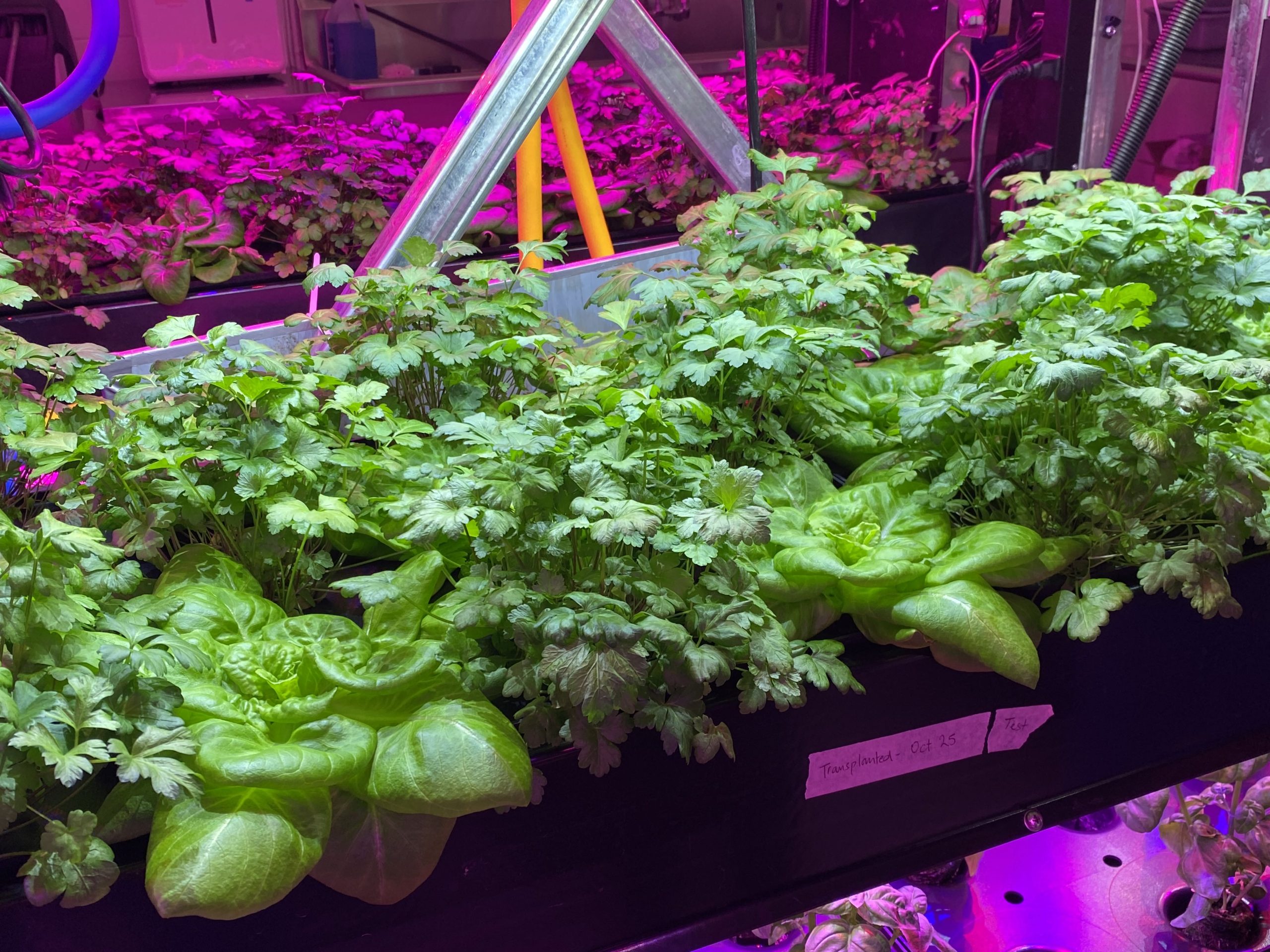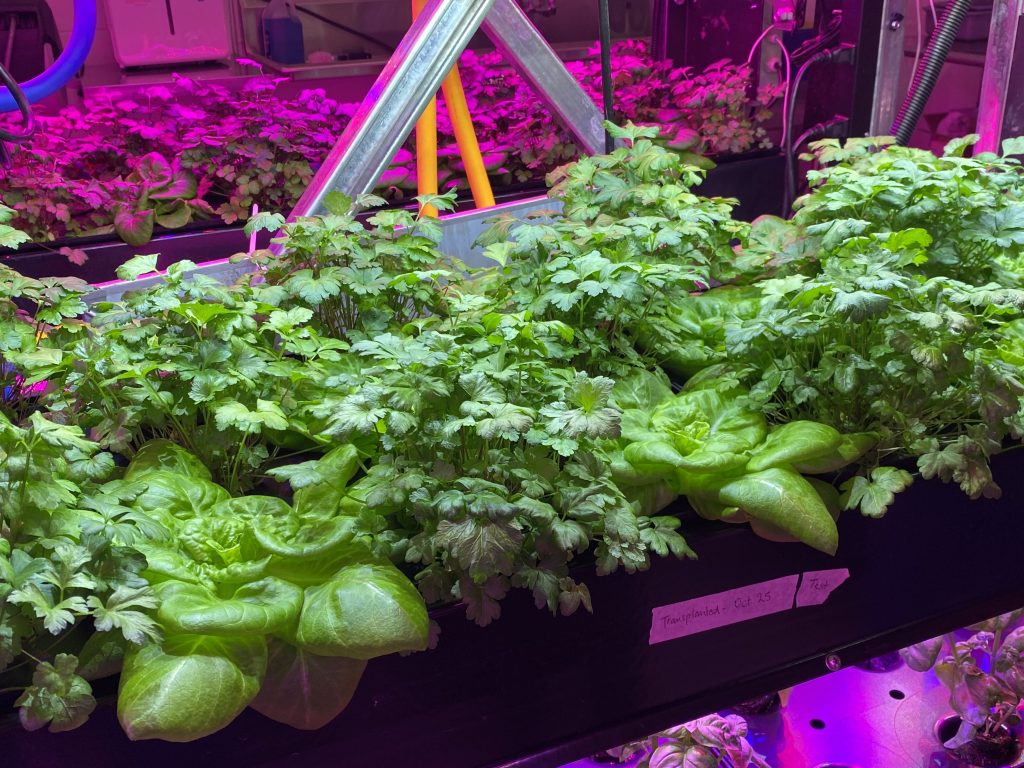UFV leading the charge toward vertical agriculture
Lenore Newman likes lettuce when it’s crisp and green and tasty, but good lettuce is hard to find. Most of the lettuce we eat is brought up from California, and Newman, director of UFV’s Food and Agriculture Institute (FAI), finds it doesn’t measure up.
“It has about a 12-day shelf life – max — to begin with and takes about eight days to get here,” says Newman, who is also a Canada Research Chair in Food and Agriculture Innovation. “There’s significant rot when it gets here and the factory in Richmond culls about 30 per cent before sending it on to grocery stores, and it often looks pre-eaten because the outer leaves are gone.
“So, they’re paying to bring dead weight up and throwing it away, and what’s left is bitter and tough.”
That’s one reason why Newman and her team are passionate advocates for vertical farming. They believe BC should be able to grow all the high-quality fruits and vegetables it needs right here at home, and they’ve been making that case to agriculture industry partners through a public engagement process. On Dec 4 they hosted a focus group that brought people interested in vertical farming together under one roof.

“There have been a lot of supply shortages from California because of drought and pest outbreaks and all that, so it makes sense to figure out ways to grow food locally, indoors in controlled environments,” says FAI Postdoctoral Research Associate and Vertical Agriculture Lead, Alesandro Glaros. “What we’re doing now is talking to people about the pros of vertical farming and the concerns that exist with this tech and how we might overcome the concerns.”
Vertical farming utilizes stacked shelfs and hydroponic/aeroponic/aquaponic growing to nurture a lot of plants in a relatively small space. Land efficiency is a huge benefit. Glaros says vertical farming is also “super water efficient” with no need for pesticides, and there’s a lot of “excitement and buzz around it right now.”
But while it is land efficient, and a vertical farming facility is smaller than a traditional greenhouse, finding space is a challenge, particularly within the Agricultural Land Reserve. There are questions about how vertical farming might co-exist with industrial and residential land. Could developers, for example, be offered incentives to fit vertical farming into a proposed condominium development?
BC is playing catchup to other parts of Canada where vertical farming is concerned, and Newman says there’s impatience from some people waiting for it to take off. She says there’s no need to fear new technology with vertical farming because people understand greenhouses and year-round growing.
Newman adds that there’s a public health argument to be made for vertical farming.
“We did work for BC Coastal Health showing that in the winter, people are passing by healthy food in the grocery store because the produce coming from California isn’t good enough,” she says. “They’re looking at lettuce in January and it’s expensive and bad and they’re not eating it.
“That’s a problem because Canadians eat about twice as much protein as we need, and we eat too many carbs because they’re cheap and abundant. But we only eat about a third of the fruit and veggies we should.”
The good news is vertical farming is coming. Slowly, sure, but conditions are right for it to flourish. The LED lights that are so crucial to indoor growing have dropped in price over the last two decades, and Newman says that was the biggest holdup.
“It’s not like we haven’t been growing things inside, like peppers and cucumbers,” Newman says. “This offers the ability to grow lettuce, leafy greens, herbs, and small fruits like strawberries. You can’t grow everything inside, but you can grow a lot.”
Newman likens the process to renovating a house and suggests we’re halfway through the remodel. Vertical farms are being built in BC. Within five years she expects we’ll be growing all our lettuce domestically.
“Quebec’s ahead of us. Right now, 50 per cent of their leafy greens are being produced in-province,” she says. “They went from zero to 50 very quickly and I expect we’ll do the same.”
Find out more about UFV’s work in vertical farming by visiting https://ufv.ca/food-agriculture-institute/the-research/indoor-agriculture/vertical-farming/.






